Watching children grow and develop is as rewarding as it is fascinating. Children are like little sponges, soaking up information and discovering all they can learn about their environment.
Within a family, parents, siblings, and grandparents all play a significant role and greatly impact a child’s emotional development. However, they are not the only influence on children at home. Growing up with a pet can positively impact early childhood development and help establish healthy emotional regulation and mental health in children.
Estimated reading time: 5 minutes
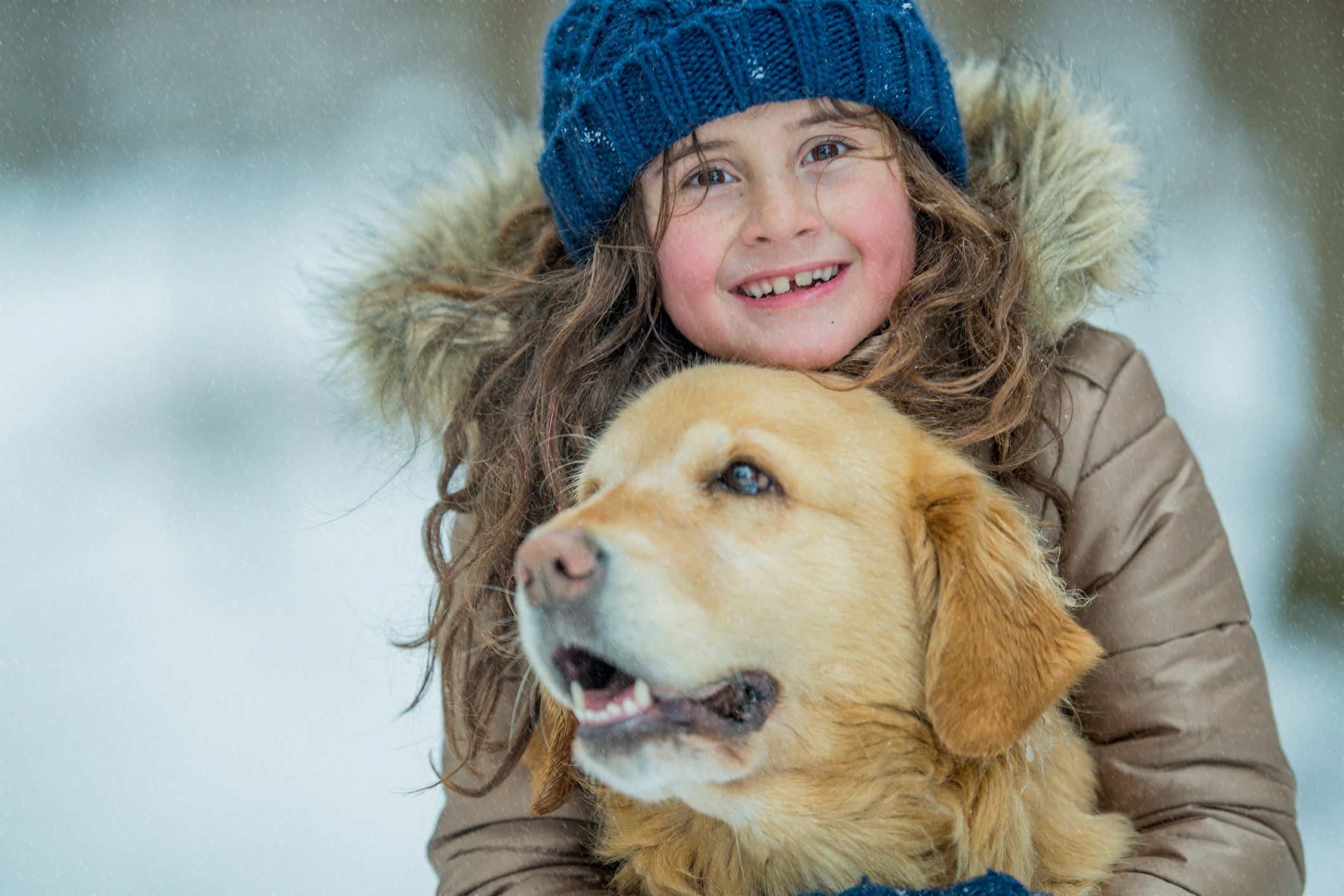 Whether you already have a pet at home or are considering adopting a new addition to your family, here are some advantages to having your child grow up with a furry friend.
Whether you already have a pet at home or are considering adopting a new addition to your family, here are some advantages to having your child grow up with a furry friend.
How Children Cultivate Emotional Expression and Emotional Regulation with Their Furry Friends
When it comes to emotions, children often experience many feelings and reactions with varying intensities. Most parents have experienced days when their child laughs one second and then cries a moment later. Emotions for children are fluid and new, and it takes practice to build confidence in understanding and expressing their feelings in healthy ways.
Studies have shown that pets help children feel more relaxed, validated, and safe so they can express their feelings instead of repressing them. Kids find comfort in animals because they are nonjudgmental, which enables them to interact with and express themselves more freely. Children who grow up with a furry friend get a mental health boost and are less likely to struggle with regulating their emotions and engaging in prosocial interactions with peers.
 Taking pets on walks, playing with them, and cuddling while reading can allow kids to bond with their furry friends, seeing them as companions they can relax and be themselves around. Interacting with animals helps children express their emotions without inhibition, especially when kids are needing to express negative emotions.
Taking pets on walks, playing with them, and cuddling while reading can allow kids to bond with their furry friends, seeing them as companions they can relax and be themselves around. Interacting with animals helps children express their emotions without inhibition, especially when kids are needing to express negative emotions.
Negative emotions are natural. Children need an outlet to feel and express these emotions in a healthy way.
There is growing evidence of children turning to their pets for comfort, reassurance, and emotional support when angry or sad. Having an animal around can allow children to work through their feelings, knowing that their pet will not judge them or expect them to feel differently. The development of emotional expression leads children to recognize their feelings better, regulate strong emotions, and pave the way for a conversation with grown-ups about how they are feeling.
Related reading: "37 Ways to for Raising an Emotionally Intelligent Child."
Secure Attachment and How Pets Help Children Feel Secure
Home is meant to be a safe space for every child. Yet, many demands devour parents’ time and attention and stress is a common factor. A pet can help create a space where children feel calm and secure even when a parent is preoccupied. Pets’ cheerfulness, presence, and attention reinforce the sense of belonging and secure attachment.
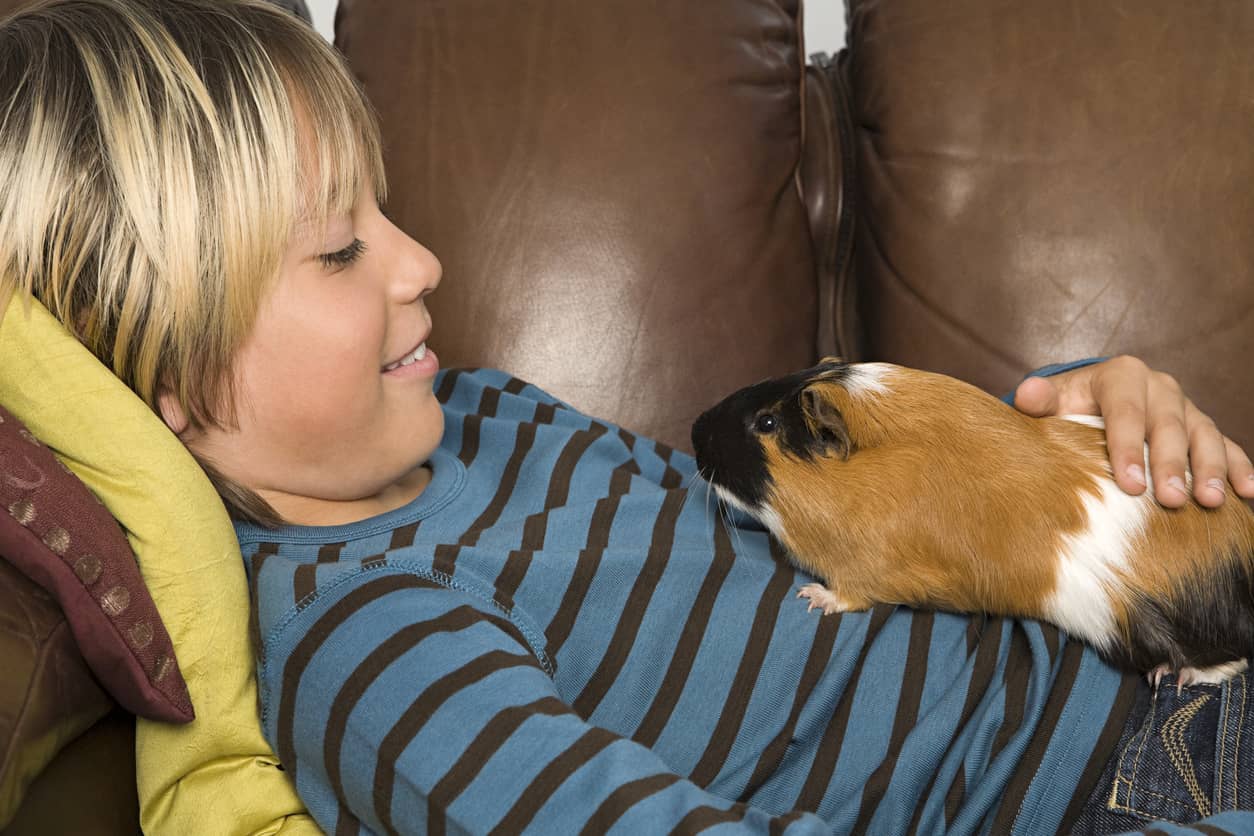
Likewise, animals offer unconditional love and support to children when they need a little comfort through physical touch. Petting or cuddling helps lower the heart rate and reduce the stress hormone cortisol. Simply having an animal in the house can consistently lower cortisol levels, and keeping this hormone in check can improve children’s mental health.
Pets also engender a nurturing environment that allows children to feel secure in vulnerable moments. Their presence soothes and research demonstrates that oxytocin is increased through human-animal interaction. Oxytocin is a neuropeptide with a calming effect, sometimes called the love drug or the cuddle hormone. A pet’s presence and responsiveness contribute to children feeling “felt,” enhancing safety and security.
As children mature, changes in the environment are inevitable, which can invoke anxiousness and loneliness. For instance, young children start attending daycare or kindergarten away from home. Or Mom and Dad take extended trips and leave their children with a nanny or relatives. Or the family might decide to move into a new home or across the country. All these new experiences can feel overwhelming, but pets offer stable companionship and comfort, helping children feel more secure. Their furry friends provide connection and continuity regardless of changes.
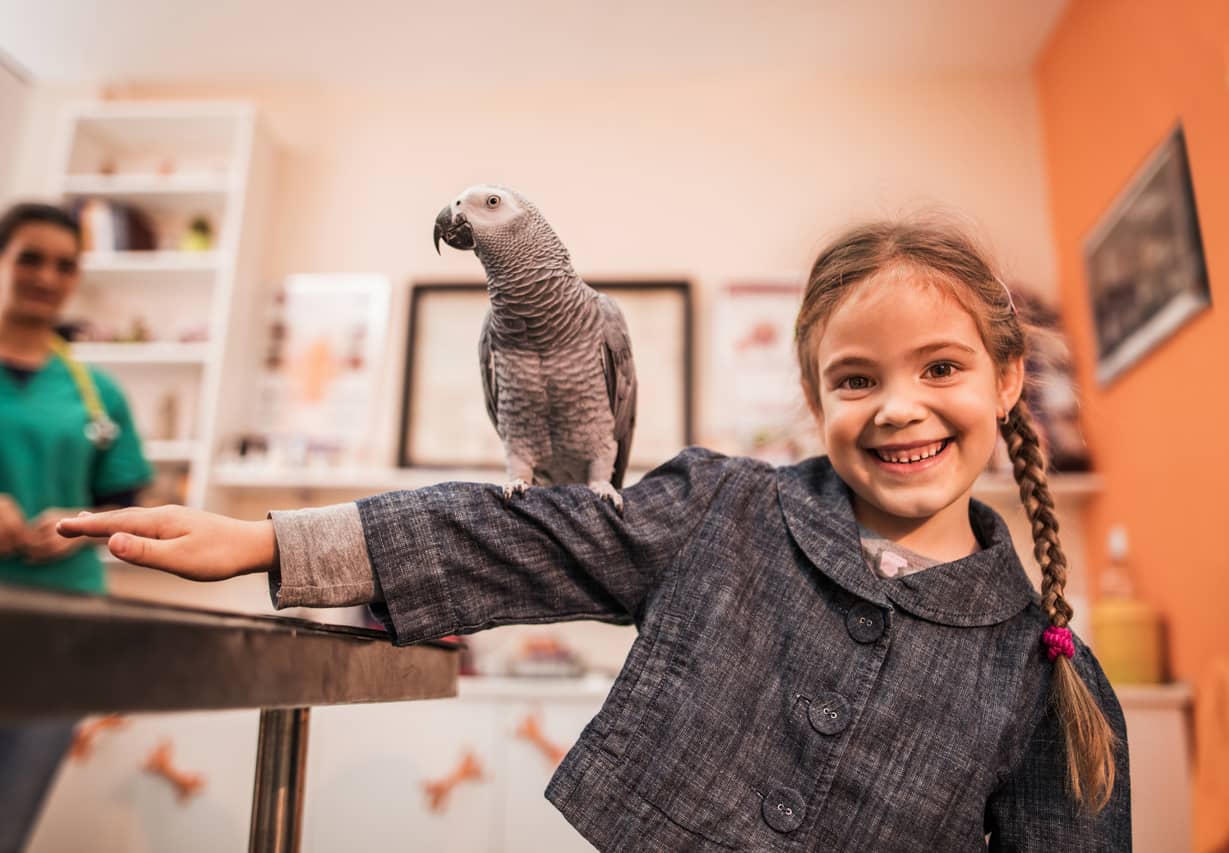
How Pets Promote Emotional Intelligence and Contribute to Teaching Children Empathy
Children tend to be more aware of their environment than we think. It’s common for kids to mimic the emotional responses (both positive and negative) of those around them. They sense and are very in tune with the body language and tone of voice of others. Animals in the home environment offer a link to a child developing empathy.
Empathy is an essential milestone in emotional intelligence. As a child matures, they move from a self-centered view of the world to an increased awareness of others’ feelings and needs. Developing empathy is a necessity when cultivating deep connections.
Animals feel and have been shown to be empathetic. As children care for, romp, or chill on the sofa, they emotionally attach to their pets and develop an understanding of themselves and the needs of others. They realize that their feelings can be similar and different from others around them. Pets help children develop a vital aspect of empathy: understanding others’ feelings and interpreting communication. With empathy, they can comprehend behaviors and emotions, interacting accordingly.
For instance, hearing their dog whine and bark or their cat incessantly meow, they are likely to investigate. This resonant act of caring helps children understand that emotions have a purpose and their actions make a difference. The dog wags his tail on arrival, and the barking stops. The cat quiets and begins purring. A guinea pig happily gnaws on fresh lettuce poked inside the cage. These immediate feedback loops and rewards reinforce empathy and a child’s increased capacity to understand the feelings and needs of others.
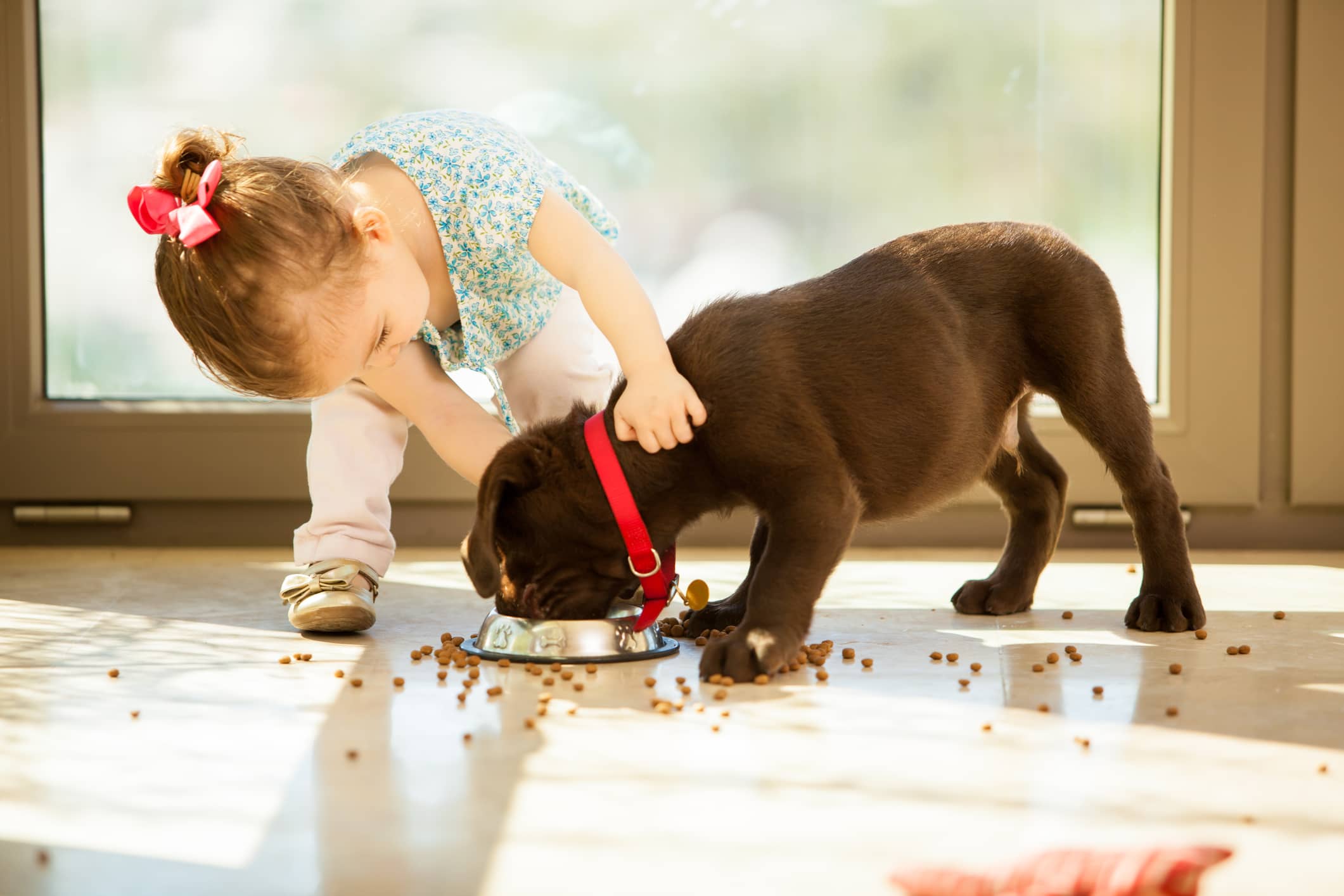
Pets Give Children and Teens a Sense of Purpose and Responsibility
As children grow older, they may reflect and develop a sense of purpose, looking for fulfillment. We can consider this need for purpose reserved for adults, but it starts at a very young age. Pet ownership allows children to care for another life and be valuable to their pet’s well-being. Kids may not know all the ins and outs of pet care, but they know how their furry friend feels and when something is off.
As we said before, children develop a strong attachment to their animals and want to make them happy. The signs of happiness are visible with pets and very gratifying to everyone. As a parent, you can encourage this caring and responsible behavior between your child and their pet by assigning them small pet-care responsibilities. Even simple tasks like feeding them, brushing their fur, and walking them can make children feel needed. Or they can even teach them tricks or commands.
Older children and teens can assist at vet visits or with at-home pet care needed after vet visits, such as administering ointment and medication. After all, being depended upon is the beginning of developing a sense of responsibility. And many important life skills are built just by observing vet check-ups. Your children can watch how the vet ensures their furry friend’s health through the color of their gums or the shine of their fur. And owning a pet allows you to teach children about money through understanding the cost, budgeting for pet care, and learning the benefits of pet insurance.
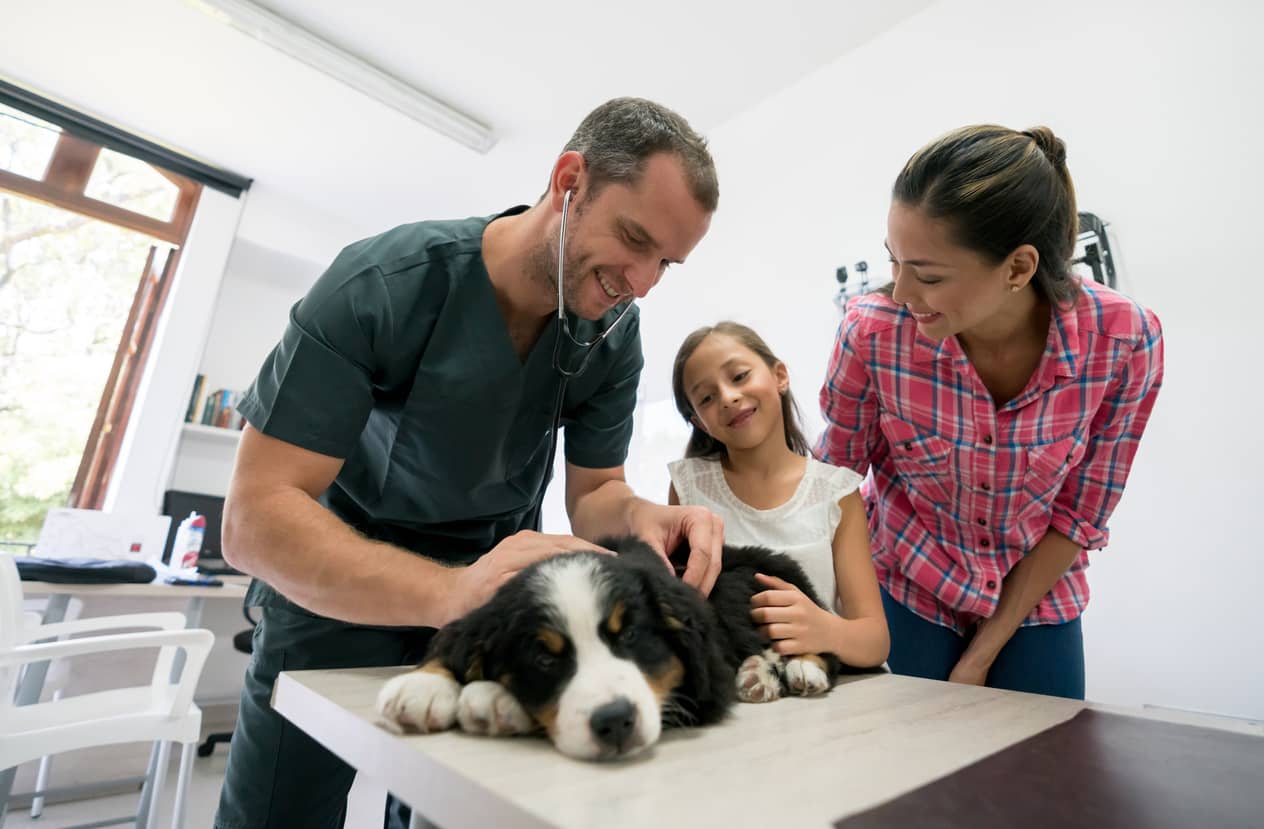 The more a child interacts and understands that they affect the life and health of their pet, the more fulfilled they will feel. These accomplishments may seem small, but they can boost a child’s self-esteem and confidence. In addition, your children will enjoy the added benefit of increased exercise and activity.
The more a child interacts and understands that they affect the life and health of their pet, the more fulfilled they will feel. These accomplishments may seem small, but they can boost a child’s self-esteem and confidence. In addition, your children will enjoy the added benefit of increased exercise and activity.
Playful pets also encourage overall positive energy in the home and increase children’s activity. When kids play and burn off energy, they usually feel happier. Pets can distract a frustrated toddler, transform a preschooler’s grumpy mood, or pull a teen away from their Xbox for a nature hike. And children can even tell their secrets to their pets—guaranteed not to be repeated!
Children in supportive environments will continue to learn and develop their emotional skills knowing they are loved and supported. Life has its bumps and difficulties, but with the companionship of a pet, these challenges can seem less daunting.
For resources to keep your family happy and healthy, contact us, follow our Heartmanity blog, or sign up for our HeartMail newsletter with more tips and life-changing research.
Learn more about emotional regulation: Practical Skills and Practices to Help You Self-Regulate and Find Inner Peace.








